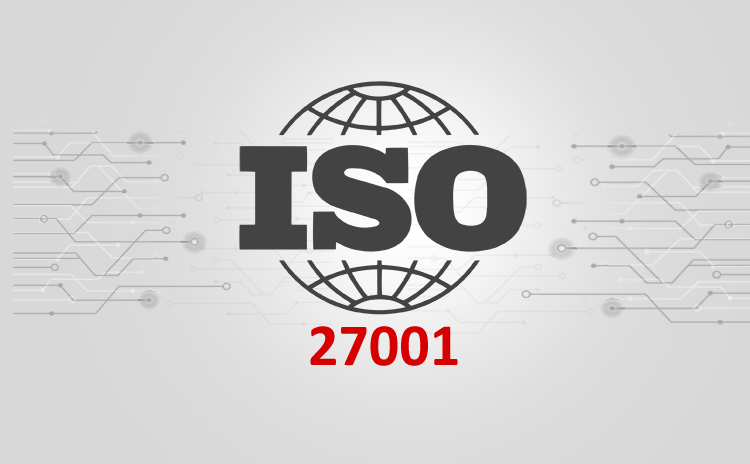- Vulnerability Assessment Of Windows 7 using Nexpose Tool - 05/04/2021
- XXE Attack using Burpsuite - 06/01/2020
- Fundamentals Of ISO 27001 - 03/01/2020
What is the ISO 27001 standard?
The ISO 27001 standard adopts a process approach for establishing, implementing, operating, monitoring, reviewing, maintaining, and improving an organization’s Information Security Management System (ISMS) It is aligned with other management systems And it supports consistent and integrated implementation and operation with related management standard
ISO Features
⦁ It has 4 clauses, 114 controls in groups and control objectives
⦁ Context of the organization
⦁ Understanding the organization and its context
⦁ Understanding the needs and expectations of interested parties
⦁ Determining the scope of the information security management system
⦁ Information security management system
⦁ Leadership
⦁ Leadership and commitment
⦁ Policy
⦁ Organizational roles, responsibilities and authorities
⦁ Planning
⦁ Actions to address risks and opportunities
⦁ Information security objectives and planning to achieve them
⦁ Support
⦁ Resources
⦁ Competence
⦁ Awareness
⦁ Communication
⦁ Documented information
⦁ Operation
⦁ Operational planning and control
⦁ Information security risk assessment
⦁ Information security risk treatment
⦁ Performance evaluation
⦁ Monitoring, measurement, analysis and evaluation
⦁ Internal audit
⦁ Management review
⦁ Improvement
⦁ Nonconformity and corrective action
⦁ Continual improvement
⦁ Puts emphasis on a continual process improvement of your ISMS
The organization should decide its prerequisites for data security and the coherence of data security administration in unfriendly circumstances, e.g. amid an emergency or calamity. The organization might check the set up and executed data security coherence controls at general interims in request to guarantee that they are substantial and powerful amid unfavorable circumstances.
⦁ Market Entering Mechanism
Executing ISO ultimately elevates the information security gauges ;pulling in; enormous names in your industry segment to set up trust with your associations’ information operations.
⦁ Involves risk assessment and management processes using a Plan, Do, Check, Act (PDCA) process model
⦁ Framework for Legal Compliance
To maintain a strategic distance from breaks of legitimate, statutory, administrative or contractual commitments identified with data security and of any security prerequisites.
⦁ Builds a culture of Disciplined Information Security
The data security objectives shall be:
⦁ Be steady with the data security policy;
⦁ Be quantifiable (if practicable);
⦁ Consider accountable data security necessities, and results from risk evaluation & what’s more, risk treatment;
⦁ Be imparted; and
⦁ Be updated as fitting.
⦁ Safeguard your valuable data and intellectual property
Proper methods might be actualized to guarantee consistence with administrative, administrative and contractual necessities identified with licensed innovation rights and utilization of exclusive programming items records should be shielded from misfortune, decimation, distortion, unapproved access and discharge, as per administrative, contractual and business necessities.
⦁ Gives Direction to Interested parties towards the ISMS
The association might decide:
⦁ Invested individuals that are important to the data security administration framework; and
⦁ The prerequisites of these invested individuals important to data security.
NOTE: The prerequisites of invested individuals may incorporate lawful and administrative necessities and contractual commitments.
⦁ With Segregation of Duties organization functions smooth
Top administration should guarantee that the obligations and powers for parts applicable to data security are doled out and conveyed.
Top administration might appoint the obligation and power for:
⦁ Guaranteeing that the data security administration framework fits in with the prerequisites of this Universal Standard
⦁ Giving an account of the execution of the data security administration framework to top administration.
NOTE: Top administration may likewise allocate obligations and powers for reporting execution of the data security administration framework inside the association.
⦁ Covers Human resource security
The contractual concurrences with representatives and temporary workers might state their and the association’s obligations regarding data security.
Data security obligations and obligations that stay substantial after end or change of vocation should be characterized, conveyed to the representative or contractual worker and authorized.
⦁ Implementation of ISO Protects your Assets
Rules for the satisfactory utilization of data and of benefits related with data and data handling offices might be recognized, reported and executed.
⦁ Covers Cryptography for protecting the data
An approach on the utilization of cryptographic controls for insurance of data should be produced and executed.
⦁ Covers Media Handling
⦁ Mobile device policy
⦁ Tele-working
⦁ Covers Access Control terminology for your organization
An access control strategy might be built up, reported and evaluated in view of business and data security necessities.
Clients might just be furnished with access to the system and system administrations that they have been particularly approved to utilize.
⦁ Covers Information Security Incident Management
Data security incidences should be reacted to in understanding with the reported policies & procedures.
⦁ Gives direction for handling Supplier Relationship
All significant data security necessities should be set up and agreed with every supplier that may get access to, procedure, store, communicate, or give IT infrastructure for, the association’s data.
⦁ Takes care of System acquisition, development and maintenance
To ensure that information security is an imperative bit of information framework over the entire lifecycle. This additionally incorporates the necessities for data frameworks which give administrations over open systems.
⦁ Takes care of Communication Security
To keep up the security of data exchanged inside an association and with any outer entity.
⦁ Manages Confidentiality, Integrity and Availability (CIA) of Information
⦁ Helps establish proven information security controls throughout the organization
⦁ Covers Data Recovery Mechanism
⦁ Review and reframing of Master Policy as per the ISO Standards
⦁ Helps in making decisions regarding Investments
⦁ Maintains balance between other management systems

